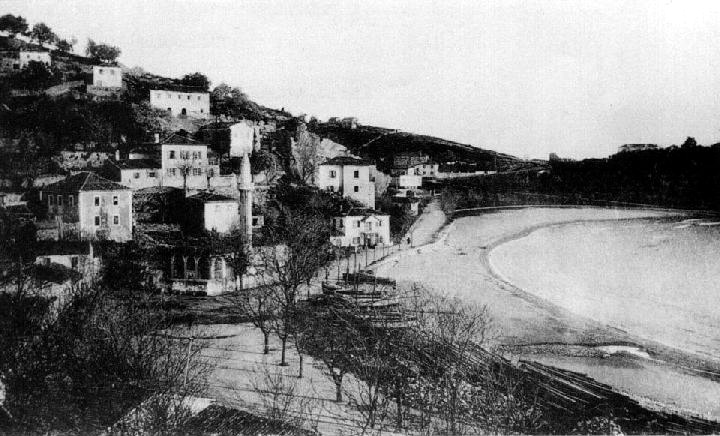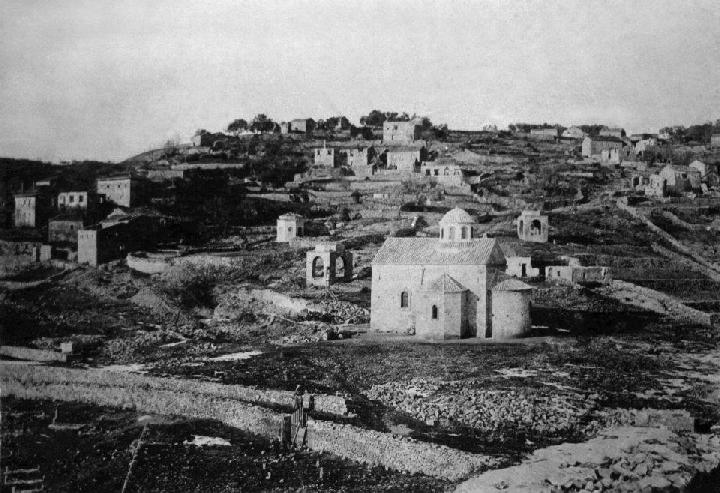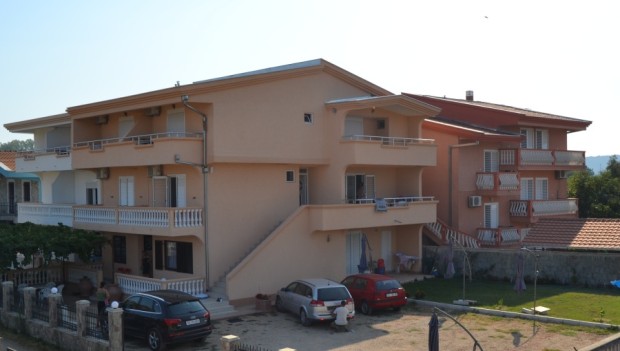During Ottoman ruling (the 16th and the 17th centuries) in Ulcinj, lived leaders of religious-civil administration, cadis (Ottoman official with power to judge on both civil and religious matters) and commander of garrison (subash). Cadis, heads of religious-civil court, had the power to judge, while the social standards were regulated according to the Islamic law, Sheriat, Holy Book-KurŌĆÖan and other Turkish provisions (kanunname). Beside these highly valued dignitaries, on the administration of Ulcinj took part also other official such as finance office workers (emine), managers of the Old Town, Kalaja (dizdar), architects (mimare), etc.

Construction of mosques, tekkes, primary parochial schools for Moslem children and charitable institutions (imarete) was the best indication of a progress of the new religion. Ulcinj consisted of two main parts: Kalaja (the Old Town) surrounded by tall walls, where beside civil population were also located military and Turkish administrative garrisons and the outside castle wall quarters (varosh) inhibited by craftsmen where the Square Market was situated. In the 17th century, along with the rapid spread of Islam, which Albanians acquired massively, such schools were opened much more. The mosques and primary schools for Moslem children (mekteb) began to be constructed more quickly. Mosques, as religious sanctuaries, built in the period from the 16th century until the end of the 18th century, had been numerous. Notes about the 17th century mosque are found in the ŌĆ£TravelogueŌĆØ by Evlija ├ćelebia-the most famous travel writer in the second half of the 17th century. At the Islamic primary schools (mekteb) was taught reading, writing, Arabic language and religion in general. They were located in the proximity of mosques. According to a document of the 18th century, Ulcinj is described as a city equipped with a superb faubourg (varosh) ŌĆ£bellisimo borgoŌĆØ inhabited only by Muslims and with Valdanos habour, six kilometers northwest. In the middle of Ulcinj was raised a high square tower, which previously served as an observation point, upon which was later set an hour. It was destroyed, or better say, it was split into two parts by lightning in 1845. In the 18th century, the quarters of Pazar, Rana, Meraja and Meterizi are mentioned as borgo of Ulcinj, while Meterizi and Meten (todaysŌĆÖ Liman) lay in the northwest of the castle, Qaf Lare quarter (todaysŌĆÖ Mahalla e Re), Pazari and Totoshi lay in the north of the castle and Rana and Suka lay in the southeast of the castle.

There are also very important the dates of construction of some of the oldest mosques in Ulcinj quarters. Destroyed or adapted churches and assemblies were replaced by mosques, as was the case with the Catholic Church in the castle of Ulcinj (Kalaja), which hadji (pilgrim) Halil Skura, in 1693, converted into the mosque. The mosque of Lami was constructed in 1689, the Mosque of Meraja in 1779, while Sahat-kulla (clock tower) was constructed in 1754. The Mosque of Rana (SailorsŌĆÖ Mosque) was constructed before the arrival of Turks, meaning before 1571. The Mosque of Pasha with Turkish bath (hamam) was constructed in 1719 on Klic Ali merits from Istanbul, while the Main Mosque (Mosque of Mezgjah) was constructed in 1728 on merits of Sulejman Mujali, and the Mosque Bregut was built by Ahmet Gjyli, a captain of seamanship in 1783.
├ćelebiaŌĆÖs data clearly show about the construction of mosques, Islamic high and primary schools (medrese and mekteb) etc, which were made possible in terms of economic empowerment of the town of Ulcinj. In Ulcinj was especially established a powerful trading aristocracy, because Ulcinj was an intermediary in the trade with the interior provinces of the country. During this period, Ulcinj was generally a fortified center, a continuation of the ancient Illyrian city. He is raised on the dominant landscape with good natural protection or got secured with strong walls. In order to gain residential areas, there were often built vaults on roads, to keep different housing environments.

During the period of Ottoman rule, in the Old Town were constructed some vaults, such as a vault of the Market Square, a vault of Beqiraga, a vault of Halil Selimaga, a vault of Ismajl Kahramani, Himi Kahramani, Zejnelag Caca, Brahim Brahimaga and Isuf Bakalli. Next to the protective walls of the castle (kalaja) in Ulcinj ran bazaar, called ŌĆ£Market SquareŌĆØ (Pazari I Gjytetit), which became lively by villagers of surrounding areas who sold their products. Expansion of the city of Ulcinj outside walls became a prescriptive requirement, as protected area had a certain limit. In these circumstances, in the 15th and 16th centuries appeared a phenomenon of the birth of first quarters outside enclosures. Varoshi quarter, below the mighty walls of the castle, marked a moment of qualitative development in the history of that time Ulcinj. In 1888 was made a registration of the ŌĆśvakefŌĆÖ property (under the Ottoman Empire, it was the land dedicated for supporting religious or educational institutions) in Ulcinj territory and in its outskirts. According to this registration, there were 12 ŌĆśvakefŌĆÖ property: 11 mosques and 1 primary school for Moslem children ŌĆ£FejzijeŌĆØ with 2.385 olive trees, 37 hectares of land and 17 houses. After the Balkan wars and the First World War, Montenegro (Yugoslavia) continued expropriation of ŌĆśvakefŌĆÖ and Albanian properties. So, in Ulcinj territory, in 1927 existed 10 ŌĆÖvakefŌĆÖ property as the Main ŌĆśVakefŌĆØ, ŌĆśVakefŌĆØ of mosques of Meterizi, Pasha, SailorsŌĆÖ Mosque, etc. while in 1931 was destroyed the SailorsŌĆÖ Mosque, in 1927 was destroyed the mosque of Meterizi (todaysŌĆÖ Orthodox Church), etc. It is obviously a word for an anti-Albanian and anti-Moslem power in Albanian areas. In the center of Ulcinj are located four mausoleums over Moslem graves (tyrbe), that of Murat Dedi, Pulti, Mani and Resulbegu of the 18th century. The Old Town of Ulcinj (Kalaja) is in the core of the cultural and historical heritage of Ulcinj. At the upper part of the Old Town, above the northern port is located museum complex. There is a church-mosque converted into museum, where all the findings from the ancient city are exposed. Behind the museum is BalshajŌĆÖs Tower, an area that is today being used as a gallery, while in front of it is a small open area, that was sometime in the past an open area for slaves, surrounded by prison bars, facing the high wall of Bolan, from time of Venice. Next to the museumŌĆÖs entrance is a Turkish fountain from 1749. There is also Ethnographic Museum, with a rich collection of exposition.
Maksut Xh. Haxhibrahimi, PhD
Translated by: Valdete Fici Brashnjani




